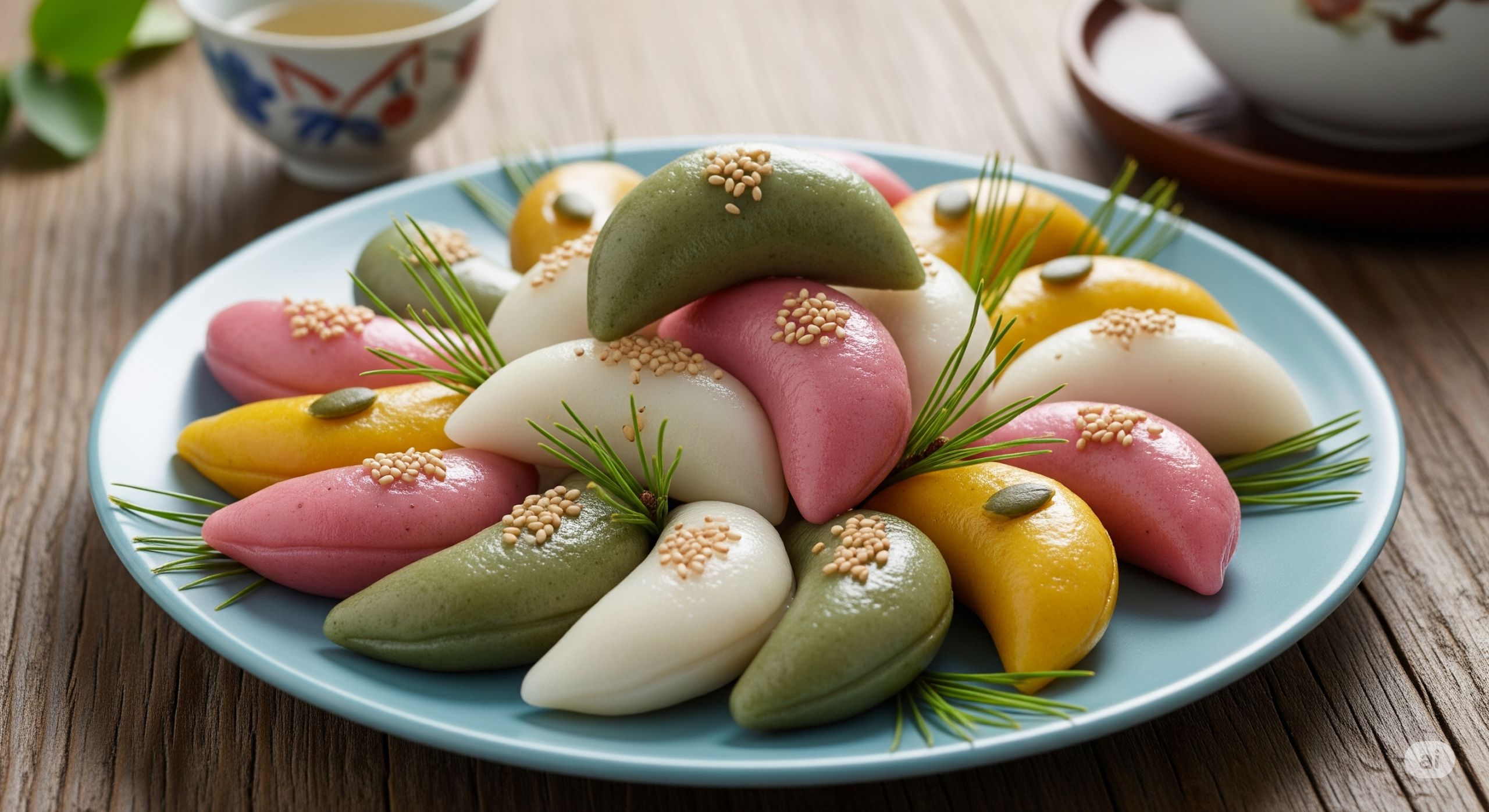1. The Basic Nature of Tteok (Rice Cakes)
Regardless of the type, the essence of any tteok is ‘highly concentrated refined carbohydrate.’ Through the process of steaming and pounding rice flour, it is transformed into a very easily digestible form that raises blood sugar very quickly and steeply. While there may be slight differences depending on the type of tteok or its filling, this fundamental property does not change.
2. The Composition of Songpyeon
– The Dough: The outer part of songpyeon is made from non-glutinous rice flour. This is the same ingredient as white rice and raises blood sugar quickly.
– The Filling: The filling of songpyeon uses ingredients like sesame seeds, beans, and chestnuts. In theory, these ingredients, containing protein, fat, and dietary fiber, could help to slightly slow the rise in blood sugar.
– Added Sugar/Honey: However, most songpyeon fillings are made with a significant amount of sugar or honey to make them sweet. This added sugar raises blood sugar so quickly that it more than cancels out any positive effects of the healthy ingredients in the filling.
3. Conclusion: No Significant Difference
Consequently, due to the rice dough on the outside and the sugar in the filling, songpyeon is a food that raises blood sugar very rapidly, just like plain rice cakes. One should not expect the small amount of protein or fat in the filling to ‘much’ slow down the rate of blood sugar rise. Eating just 2-3 pieces of songpyeon is equivalent to consuming more than half a bowl of rice’s worth of carbohydrates, making portion control extremely important.
Summary: Even though songpyeon contains fillings like sesame seeds or beans, the effect of the rice dough itself and the sugar added to the filling is so significant that it is a food that spikes blood sugar, just like plain rice cakes.


Leave a Reply